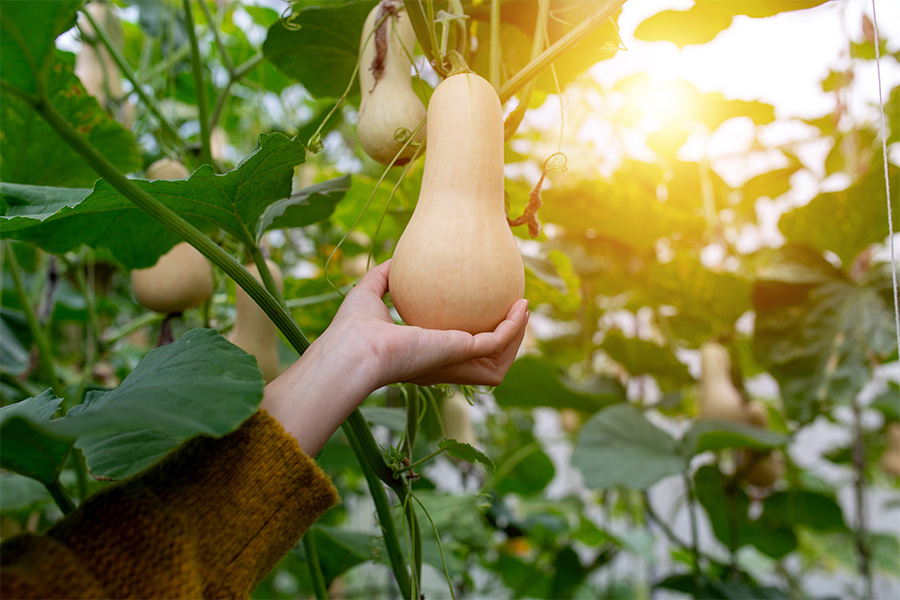-

This horticulture publication is about the commercial production of southern peas.
|
-
 Squash (Cucurbita spp.) is a member of the cucurbit family, which consists of a number of warm-season vegetables. Another broad group of squash called winter squash. Each group is classified into several types based on fruit shape and color. Warm-season squash are harvested while immature while winter squash are harvested…
Squash (Cucurbita spp.) is a member of the cucurbit family, which consists of a number of warm-season vegetables. Another broad group of squash called winter squash. Each group is classified into several types based on fruit shape and color. Warm-season squash are harvested while immature while winter squash are harvested…|
-
 Watermelon is a warm-season crop related to cantaloupe, squash, cucumber and pumpkin. Watermelons can be grown on any well-drained soil throughout Georgia but are particularly well adapted to the Coastal Plain soils of South Georgia. Watermelons will continue to be an important part of vegetable production in the state. Increases…
Watermelon is a warm-season crop related to cantaloupe, squash, cucumber and pumpkin. Watermelons can be grown on any well-drained soil throughout Georgia but are particularly well adapted to the Coastal Plain soils of South Georgia. Watermelons will continue to be an important part of vegetable production in the state. Increases…|
-

B 1198
Onion Production Guide
This publication represents the latest information available on the commercial production of short-day onions in south Georgia.
|
-

This publication discusses organic Vidalia onion production in Georgia, from site selection and harvesting to certification.
|
-

B 1302
Implanting Beef Cattle
Implanting nursing calves with a growth stimulant is one of the most economically justifiable practices available in the beef industry. Implants have been shown to increase weaning weights of nursing calves in hundreds of research trials. Stocker and feedlot calves exhibit even greater responses than nursing calves. Implanting returns more…|
-
 This publication provides somatic cell count benchmarks for Holstein herds processed by Dairy Records Management Systems. Some examples of using and applying benchmark values are provided. However, this publication should be viewed primarily as a comprehensive resource of somatic cell count benchmark values. These benchmarks will be useful to dairy…
This publication provides somatic cell count benchmarks for Holstein herds processed by Dairy Records Management Systems. Some examples of using and applying benchmark values are provided. However, this publication should be viewed primarily as a comprehensive resource of somatic cell count benchmark values. These benchmarks will be useful to dairy…|
-
 This publication provides production and management benchmarks for Holstein herds processed by Dairy Records Management Systems. Some examples of using and applying benchmark values are provided. However, this publication should be viewed primarily as a comprehensive resource of production and management benchmark values. These benchmarks will be useful to dairy…
This publication provides production and management benchmarks for Holstein herds processed by Dairy Records Management Systems. Some examples of using and applying benchmark values are provided. However, this publication should be viewed primarily as a comprehensive resource of production and management benchmark values. These benchmarks will be useful to dairy…|